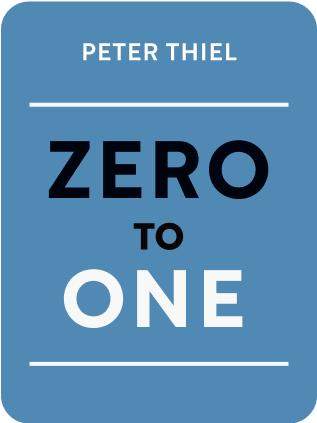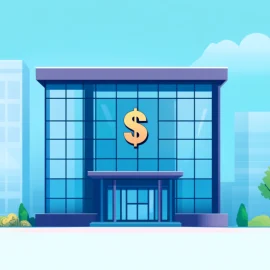

This article is an excerpt from the Shortform summary of "Zero To One" by Peter Thiel. Shortform has the world's best summaries of books you should be reading.
Like this article? Sign up for a free trial here .
Are you building a business and looking for the best startup strategy?
Developing a startup strategy takes a lot of time and work. In order to build an effective startup strategy, you have to consider everything from everyday logistics to big picture profit goals.
Developing a Startup Strategy, Step 1: Start With Startup Thinking
For several reasons, startups consisting of a few people with a mission are the source of most new technology. In order to develop a startup strategy, you need to start with startup thinking.
Big organizations don’t often produce new technology because they tend to avoid risk. People working alone seldom produce new technology either. A brilliant loner might produce great art, but she wouldn’t have the means to create a new industry.
Startups work because it takes multiple people to create new technology, but also smallness for momentum and flexibility. Small companies encourage and are conducive to new thinking because they know new thinking is their biggest asset. Business startup strategies consider all aspects.
The first job of a startup is to question everything and rethink business from the beginning. Consider this when reviewing business startup strategies.
Startup Strategy, Step 2: Build a Cohesive Team
A startup strategy needs a hiring plan. We often think of coworkers as people we need to get along with at work, but don’t have to like or befriend outside of work. This is considered being professional—but it’s not the way to run an extraordinary startup.
When you’ve discovered a new niche market, you need to move quickly to dominate it and distance your company from potential competition. To move fast with maximum productivity, you need a tight-knit and extremely dedicated team—people with more than just a transactional relationship with each other.
Many tech companies think the way to attract recruits and build a committed culture is by offering perks, such as free laundry pick-up, yoga and massages, an on-site chef, pet daycare, and so on. But perks have no value unless they’re backed with substance. Further, culture is something a company is, not something it has. A company is a group of people pursuing a mission; its culture is how they do that.
Startup Strategy, Step 3: If You Build it, You Still Have to Sell It
Many Silicon Valley entrepreneurs underestimate the importance of distribution, which encompasses whatever it takes to sell your product (advertising, sales, marketing, and distribution channels). But understanding distribution and having a plan for it is critical to a company’s success—it should be part of designing your product. Business startup strategies often overlook this important part of your strategy.
We often overlook the importance of distribution because society in general looks down on salespeople and advertising as dishonest and manipulative. Silicon Valley entrepreneurs take this a step further—because of a bias toward building rather than selling, they often believe their product is so superior it should sell itself: if they build it, customers will come.
But customers won’t buy your product automatically; you have to sell it, which is more challenging than many entrepreneurs and engineers realize.
Traditional Sales
Many sales don’t reach the complex level. Those ranging from $10,000 to $100,000 won’t require the CEO’s involvement. To handle most sales, you need a process for getting your product in front of a wide audience at a reasonable cost.
Sometimes a traditional approach that starts small with a sales rep is an effective startup strategy. For example in 2008, Box, a startup selling cloud storage, struggled to sell its storage solution at a time when people didn’t understand cloud storage or realize they needed it. Box’s sales reps started meeting with small groups of users who had storage issues and expanded from there. For instance, they sold a small account to the Stanford University Sleep Clinic. Ultimately, the university started offering a Box account to all students and faculty.
The key to sales success for Box was to start small rather than attempting a complex sales approach with top university officials, where it would have been tough to get a foot in the door.
Sometimes the product itself can be a kind of sales tool. For example, ZocDoc is a platform that allows people to schedule medical appointments online. When doctors subscribe for a monthly fee, their patients can use the service. The company uses an army of sales reps to recruit doctors to join.
However, there’s a network effect that increases sales as well. The greater the number of doctors who join, the more valuable the service is to consumers/patients—and the greater the number of patients who use it, the more valuable it is to doctors in saving them money and time.
Marketing and Advertising
Marketing and advertising are effective for selling low-priced products for mass consumption—such as package goods sold in supermarkets—that don’t lend themselves to viral sales or traditional sales by reps. Marketing and advertising are an important part of any business strategy for startups.
For example, to sell laundry detergent in large retail outlets, Procter and Gamble creates television commercials and newspaper coupons, and it designs its boxes to be eye-catching in stores.
Advertising can be effective for startups as well—but only when your customer lifetime value acquisition costs make traditional or complex sales methods unfeasible (since the human labor cost of sales exceeds the value of gaining a customer). The company selling $100 eyeglasses, Warby Parker, was able to get its affordable glasses in front of millions through quirky TV ads.
On a cautionary note, startups shouldn’t be tempted by the ego boost of a high-profile ad campaign—it’s generally a waste of money to vie with larger companies in an unending battle for attention via TV stunts.
Monopoly Characteristics
Monopoly businesses with strong future cash flows share several characteristics: proprietary technology, network effects, economies of scale, and branding. Comparing your business against these characteristics may point up opportunities for improving its long-term viability.
1) Proprietary Technology
This may be your greatest possible asset because it makes your product difficult to copy. For example, proprietary technologies used in Google’s search algorithms for aspects such as query autocompletion make the search engine hard to replicate.
For proprietary technology to give you a monopolistic edge, it needs to be at least 10 times better in some major way than anything like it. Anything short of a dramatic difference will seem insignificant to users, which means they’ll be unlikely to switch from what they’re used to.
You can differentiate a product as 10 times better in several ways:
- Create something new—when you create an option that never existed before, for instance a cure for baldness, the increase in value over the alternative (nothing) is exponential.
- Improve on something so dramatically that you eliminate competition. For example, PayPal improved buying and selling on eBay exponentially by enabling buyers to pay immediately. Amazon outdistanced all other bookstores when it started in 1995 by offering an unlimited number of book titles. Amazon didn’t need to maintain an inventory of books—it just requested a title from a supplier when a customer ordered it.
- Dramatically improved design can also elevate a product far above others in its category. For example, while there were several rudimentary tablet computers available, Apple’s iPad was superior because it was so much easier to use.
2) Network Effects
A network effect is the way additional users improve the value of a product or service for all users. For example, the more your friends use Instagram, the more value you get from being on it too, rather than on a different social media app your friends don’t use. To generate network effects, your product has to be immediately valuable to its earliest adopters and then grow from there. A network business has to work on a small scale before it can go big—in fact, you have to plan on starting small. Mark Zuckerburg started Facebook by getting just his Harvard classmates to sign up.
3) Economies of Scale
A monopoly gets stronger as it grows because the fixed costs of creating a new product (like office space and engineering or development) are spread over a greater volume of sales and the cost per unit declines.
For software startups, economies of scale are huge because it costs little to produce a copy of the software to sell. However, for businesses that provide a service, the advantages of scale are limited. For instance, even by hiring more people and opening new locations, a yoga studio can only serve a certain number of customers. By contrast, a small group of software developers can provide value to millions.
When starting a business, you should build in the capability of scaling. For example, Twitter has built-in scale: it can keep increasing the number of users without adding customized features.
4) Branding
Creating an unassailable brand is integral to having a monopoly. For example, Apple is the most powerful brand in technology. Everything from product design (including look and materials), to store design, price, and advertising contribute to an overall impression that Apple products are like no other.
Of course, branding alone isn’t enough. Apple’s market dominance is based on superior products backed by an array of proprietary hardware and software technologies. Apple also benefits from strong network effects created by both users and developers of software for its devices.
Startup Strategy, Step 4: Expand
Once you’ve dominated a small market, slowly expand into related markets that are a bit wider. You can use this a part of your business strategy for startups.
This was Amazon’s approach. Jeff Bezos’s long-term goal was to dominate online retail, but he chose to start by selling only one thing—books. Amazon quickly became the dominant source of books for people who didn’t live near a bookstore or who wanted books not available in their area.
After a successful start with books, Amazon’s options for scaling up were to either increase the number of book customers (readers) or expand into similar markets. The company began selling CDs, videos, and software and gradually expanded to other categories until it became the dominant online retailer.
eBay also started small, focusing first on Beanie Baby collectors, then moved on to other collectors and hobbyists before ultimately becoming the top auction marketplace for selling something online. However, eBay learned there are limits to scale. It found that the auction model worked better for selling distinctive products like coins and stamps than for commodity items like pencils, which were easier to buy on Amazon than to bid for on eBay. eBay is still a successful monopoly, although smaller than originally envisioned.
The best startup strategy includes lots of different factors. Your startup strategy needs to be comprehensive and well-rounded.

———End of Preview———
Like what you just read? Read the rest of the world's best summary of Peter Thiel's "Zero To One" at Shortform .
Here's what you'll find in our full Zero To One summary :
- Why some companies genuinely move the world forward when most don't
- How to build a company that becomes a monopoly (and why monopolies aren't bad)
- Silicon Valley secrets to selling products and building rockstar teams






